Teaching Articulation Marks
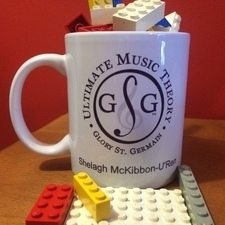
Teaching Articulation Marks Effectively
Articulation marks refer to the way a note is played, the "touch". In my 35+ years of teaching, I have never met a child who understands what "stressed" or "detached" or "well marked" means (as it pertains to music anyways! LOL).
It sounds like a joke - "how do you stress a note"? (Oh, I would LOVE it if you asked your students that question and posted their responses below!)
If you struggle with understanding (or teaching) those articulation marks and terms, you are not alone!
In order to understand and teach articulation effectively, it is often fun to think outside of the box! Are you ready to have some fun (and to learn why I keep a cup of Lego in my studio)?
Articulation Marks - Definitions
Staccato, Portato, Tenuto, Accent and Fermata are 5 common Articulation marks or signs. The Royal Conservatory of Music's 2009 Edition Theory Syllabus definitions are:
- Staccato - detached
- Tenuto - held, sustained
- Accent - a stressed note
- Fermata - pause, hold the note or rest longer than its written value
Portato is not included in this Syllabus, however I like to include it when teaching Articulation since I refer to it often (especially when teaching in Baroque Style).
The Dolmetsch Online Music Dictionary defines Portato as;
- Portato - slurred or articulated legato; a musical articulation midway between staccato and legato
So - how do we teach these Articulations marks when students have no clue what the descriptive words or definitions mean?
Teaching Articulation Marks - Visual Learner
Students have different and varied learning styles. I am blessed with an abundance of students with varied learning styles - Visual, Auditory, Kinesthetic and Special Needs.
An effective way to explain different articulations to a Visual Learner is to use your Ultimate Music Theory Whiteboard and visually map out the length of sound given to each note.
If a regular Quarter Note 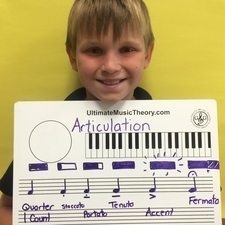 note is one complete "block of sound", then we could describe the different articulations in terms of how much of that "block of sound" each receives!
note is one complete "block of sound", then we could describe the different articulations in terms of how much of that "block of sound" each receives!
Jaydon and I explored this using his Whiteboard. Using the template of a Quarter Note = one Block of Sound, we discovered that the articulations would be:
- Staccato - 1/4 of the block of sound
- Portato - 3/4 of the block of sound
- Tenuto - the full block of sound
- Accent - the full block of sound, but played much louder!
- Fermata - the full block of sound PLUS another half a block of sound
Using our metronome set at a very slow speed, we then played these notes on the piano to hear the lengths. Jaydon was able to See, Hear and Feel the different Articulations.
Teaching Articulation Marks - Kinesthetic Learner
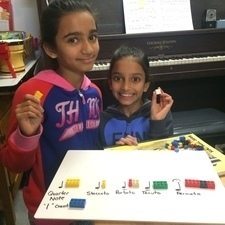 Prutha (on the left) is primarily a Visual Learner while her sister Kenny (on the right) is primarily a Kinesthetic Learner. They share a 2 hour Piano/Theory lesson.
Prutha (on the left) is primarily a Visual Learner while her sister Kenny (on the right) is primarily a Kinesthetic Learner. They share a 2 hour Piano/Theory lesson.
While working with Prutha on the different articulations in her Level 4 Baroque piece, she was struggling with the concept of the Baroque Portato Touch.
Since Kenny was working on her Prep 1 Rudiments Lesson on Articulation (Page 102), out came the Lego! Kenny took the Lego blocks and added them together to show the length of sound that each articulation sign would create over a quarter note "Lego block".
The accent isn't shown on her chart - but Kenny decided that she could "yell" the 1 count quarter note Lego Block at her sister to explain an accent!
We then played these on the piano. Both girls were able to See, Hear and Feel the different Articulation marks (and we had a blast!). Bonus - when Prutha returned to playing her Baroque piece, she played with a perfect Baroque Portato touch!
Teaching Articulation Marks - Auditory Learner
If you noticed, each of the above activities ended up with us playing at the piano. It is important to make this auditory connection with what the student is seeing and feeling on the Whiteboard.
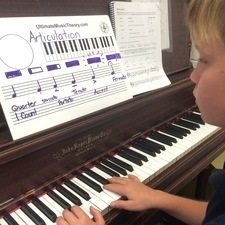 For an Auditory learner, use either Whiteboard Game to create the Visual and Kinesthetic connection - and then add an Auditory Listening Game on the piano!
For an Auditory learner, use either Whiteboard Game to create the Visual and Kinesthetic connection - and then add an Auditory Listening Game on the piano!
Set the metronome to a slow, steady quarter note beat and then play several notes in the same articulation. Ask your student to identify the articulation played. Then, SWITCH! The student plays the articulations on the piano and the teacher must identify them!
By having the student be the "teacher", you are ensuring that the student truly does See, Hear and Feel the different Articulations (and they will LOVE trying to trick you!).
Teaching Articulation Marks - Ultimate Music Theory Workbooks
Students may start with Prep 1 and Prep 2 Rudiments, followed by the Basic Rudiments Workbook.
For students who have not started with the UMT Prep Series (Prep 1 Rudiments and Prep 2 Rudiments), but have gone straight into Basic Rudiments, Articulation is taught early in the Ultimate Music Theory Basic Workbook on Page 34.
One of the many things that I love about how the Ultimate Music Theory Series presents concepts is that students don't just "learn" the concept to understand it, they learn how to write and use them properly too!
The Ultimate Music Theory Student Packs will give your students the tools to learn!
Each Student Pack includes:
- the Ultimate Music Theory Tote Bag (with LOTS of room for all their music books!)
- the "see-through" UMT Ruler (that clips into the workbook)
- the "MUST HAVE" Student Whiteboard (for use at home and at the lesson)
- the Ultimate Music Theory Workbook
Order your Student Pack for your:
- Prep 1 Rudiments Students (any student starting music lessons or any student who has not had a foundation in theory)
- Prep 2 Rudiments Students (your student with a few years of beginner music lessons, but needing a review)
- Basic Rudiments Students (your older beginner student or your late-elementary student who has limited theory)
- Intermediate Rudiments Students (your student who has completed the Basic Rudiments Workbook and Examination)
- Advanced Rudiments Students (your student who has completed the Basic and Intermediate Rudiments Workbooks and Examinations)
- Complete Rudiments Students (your senior student who needs to learn theory QUICKLY!)
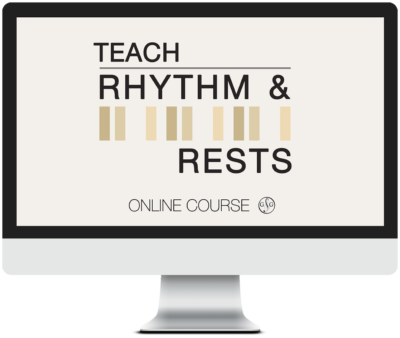
Teach Rhythm & Rests Online Course is a Teacher Training with 8 Video Sessions plus downloadable worksheets on Simple, Compound & Hybrid Time on Teaching Rests.
Teacher Training includes 8 video sessions covering:
- Preparatory (Prep 1 & Prep 2)
- Basic Music Theory
- Intermediate Music Theory
- Advanced Music Theory
Plus all your downloadable worksheets with examples and exercises for all 4 music theory levels.
Keep on Learning... With a Smile and a Song!
Shelagh McKibbon-U'Ren

